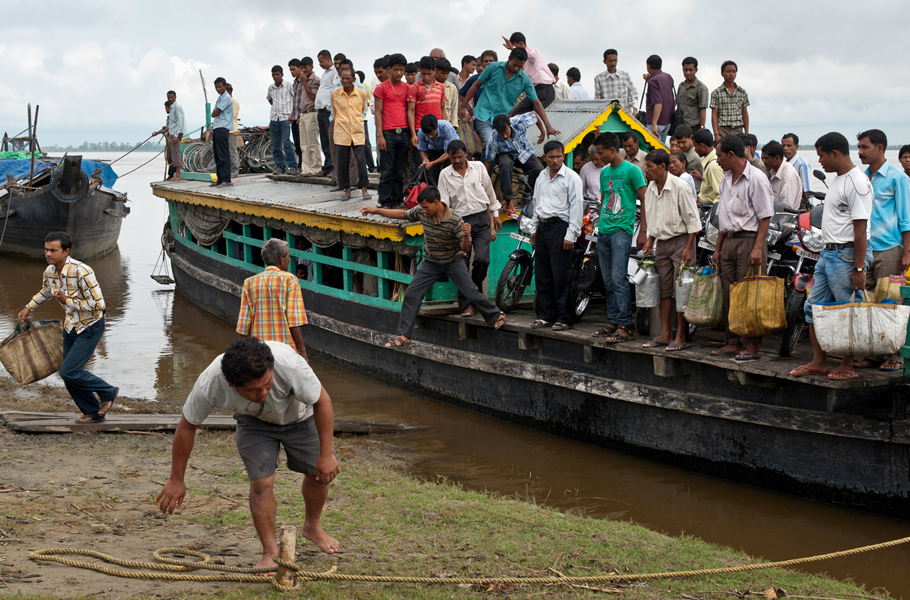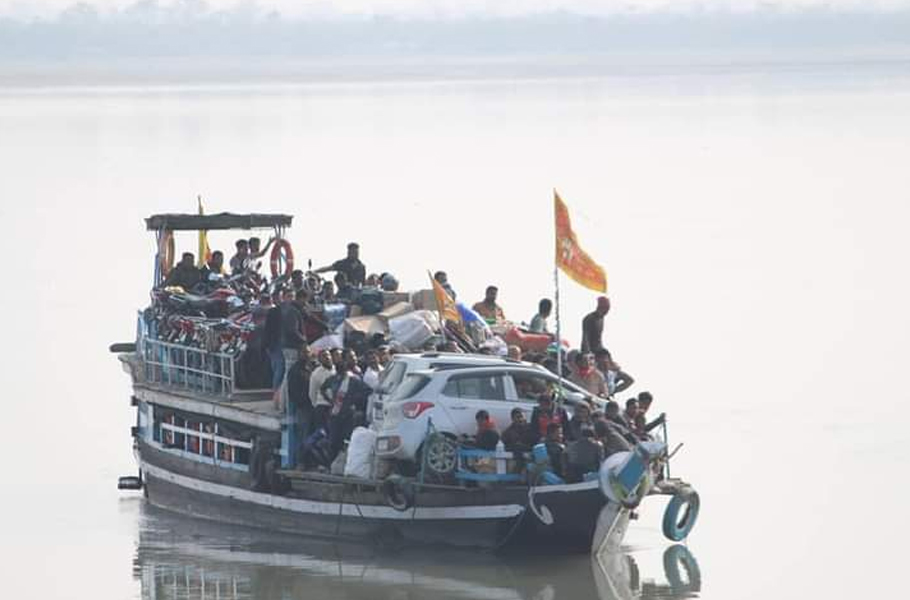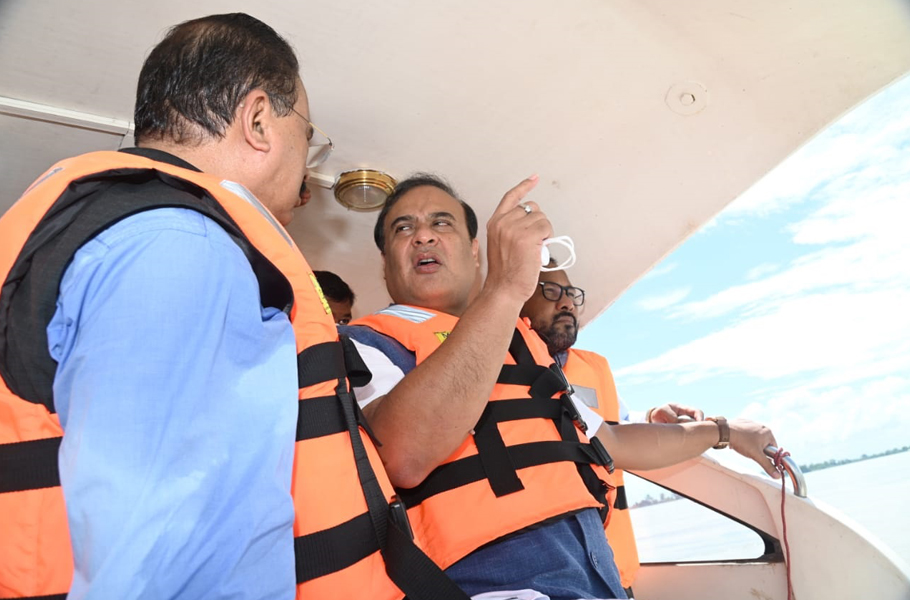
- Home
- India
- World
- Premium
- THE FEDERAL SPECIAL
- Analysis
- States
- Perspective
- Videos
- Sports
- Education
- Entertainment
- Elections
- Features
- Health
- Business
- Series
- Bishnoi's Men
- NEET TANGLE
- Economy Series
- Earth Day
- Kashmir’s Frozen Turbulence
- India@75
- The legend of Ramjanmabhoomi
- Liberalisation@30
- How to tame a dragon
- Celebrating biodiversity
- Farm Matters
- 50 days of solitude
- Bringing Migrants Home
- Budget 2020
- Jharkhand Votes
- The Federal Investigates
- The Federal Impact
- Vanishing Sand
- Gandhi @ 150
- Andhra Today
- Field report
- Operation Gulmarg
- Pandemic @1 Mn in India
- The Federal Year-End
- The Zero Year
- Science
- Brand studio
- Newsletter
- Elections 2024
- Events
- Home
- IndiaIndia
- World
- Analysis
- StatesStates
- PerspectivePerspective
- VideosVideos
- Sports
- Education
- Entertainment
- ElectionsElections
- Features
- Health
- BusinessBusiness
- Premium
- Loading...
Premium - Events

How Majuli is teetering on the edge, one wave at a time
Majuli island is a source of constant suffering for its inhabitants. Soil erosion and poor connectivity make everyday life an existential battle for residents.

It was June, 2019. Assam-based freelance journalist Dilip Sharma was returning to Jorhat from Majuli, the world’s largest riverine island. He had gone there on a work assignment. The river Brahmaputra was in full spate as in every monsoon. But braving turbulent waters hundreds of people like Sharma were perilously criss-crossing the river in jam-packed ferries, the only mode of...
It was June, 2019. Assam-based freelance journalist Dilip Sharma was returning to Jorhat from Majuli, the world’s largest riverine island. He had gone there on a work assignment.
The river Brahmaputra was in full spate as in every monsoon. But braving turbulent waters hundreds of people like Sharma were perilously criss-crossing the river in jam-packed ferries, the only mode of communication that connects the island in the Brahmaputra in Assam with the outside world.
Apart from passengers, the ferries, as usual, were loaded with cars, two-wheelers and goods.
There was hardly any space for movement inside the ferry Sharma had boarded, he recalled, as it was crammed with cars and bikes. “To reach one end of the ferry from the other, the helper, a teenage boy of 14 to 15 years of age, had to clamber along the side bars of the boat, swinging like an ape from window to window. This maneuver proved fatal,” he said.
The ferry helper slipped and fell into the gushing river, Sharma narrated. Before anyone could react, the strong river current swept away the teenager. His body was found two days later near Nimati Ghat on the other side of the river bank.
Not too long ago a boat carrying a pregnant woman to Jorhat for delivery lost its way in the river amid heavy rains. It could be traced and rescued only after a search boat was sent by the Jorhat deputy commissioner who was alerted by a quick-thinking ASHA worker, Reema Das.
Such mishaps are not uncommon during the ferry journeys. “There are instances of even passengers falling off the overcrowded ferries. But most of the time they go unreported,” said Ajit Hazarika, the president of the Majuli district unit of the All Assam Students Union (AASU).
The ferries are overcrowded particularly in the morning and evening hours due to shortage of boats. Only 12 (five double engines, two Ro Pax and five sing-engine) ferries do the sorties from Nimati Ghat near Jorhat to three operational ghats (docks) of the islands — the Kamalabari Ghat, Afalamukh Ghat and Dakhinpat Ghat.

Every day 6,000-8,000 people travel (both to and fro) in these ferries, according to a rough estimate of Assam’s Inland Water Transport department. In addition to passengers, the ferries also transport around 500 bikes, several small cars and goods daily.
The last ferry leaves Majuli at 3.30 pm and at 4 pm from Jorhat. At night, the island remains cut off from the rest of Assam, except in case of medical emergencies.
“There are ambulance boats for emergency patients. But it is difficult to avail the ambulance service if the patient is not referred to a medical college,” Hazarika said.
To overcome the problem, the AASU since 2005 has been spearheading a demand for a road bridge to connect the island with Jorhat, the nearest mainland town from Majuli. So far, it has only got promises from the government.
Rehashing promises
The failed promise to construct the bridge came to haunt the state’s ruling BJP on September 8 when two ferries—one Majuli-bound and another coming from the island—collided at Nimati Ghat, some 30 km from Jorhat.
A college teacher and a young doctor were among those killed in the accident, finally dragging the attention of the outside world to the hazardous ferry journeys carried out daily by thousands of people to reach or exit the island.
“All Majuli needed is a bridge but for 60 years they never gave it. This is nothing but injustice. …. I will do in five years what the Congress couldn’t do in 60 years,” Prime Minister Narendra Modi had promised addressing an election rally in the island in March 2016.
People had reason to trust Modi. Two years before, even before the BJP came to power in the state, Union surface transport minister Nitin Gadkari had laid the foundation stone for the much-awaited bridge.

The BJP further gave its projected chief minister Sarbananda Sonowal nominations from Majuli to underscore the importance the party was giving to the island, a leading centre of Assam’s neo-Vaishnavite culture.
Majuli had overwhelmingly voted for the BJP and Sonowal eventually became the chief minister, raising the hope of islanders about the fulfilment of their long-cherished dream.
Like many other government promises, this too was forgotten soon after the elections were over though the new government after coming to power declared the island a full-fledged district.
The hibernate spell was broken only after five years when it was time again for another state election in 2021. The foundation stone for the two-lane promised bridge to connect Kamalabari to Nimati Ghat was relaid — this time by none other than Modi — just weeks ahead of the April assembly polls.
The BJP government claimed the 6.8 km-long bridge to be constructed at a cost of Rs 925.47 crore would provide seamless road connectivity to Majuli with rest of the state to meet health, education and other development needs of the island’s 1.6 lakh people. The bridge is scheduled to be completed within four years. But that is possible only if the construction work continues and is not abandoned just like it has been after the May 2021 election results.
The UP State Bridge Corporation Ltd, which was allotted the construction work, moved some machinery and started erecting labour camps for the project immediately after the fresh foundation stone was laid. Majuli residents, however, claim the machinery have been taken back after the elections were over.
The latest accident put the spotlight back on the promised bridge. The AASU and the Asom Jatiyatabadi Yuba Chatra Parishad (AJYCP) staged a protest in the island against the government’s failure to fulfil its commitment.
Police had to baton charge to disperse a group of students who were raising the “BJP go back” slogans during the visit of chief minister Himanta Biswa Sarma to the island after the accident.

Faced with public anger, Sarma assured that the construction work for the bridge would commence from November this year. A cabinet committee would be formed to regularly supervise the progress of the work, he added.
The dilly-dallying over the bridge is just one instance of how the current BJP government is using Majuli as a political prop to push its Hindutva brand of politics in Assam.
Once the capital of the Sootia kingdom, Majuli has been an important seat of Assam’s influential Vaisnabite culture since the arrival of Srimanta Sankardeva to the island. Sankardeva was a 16th century social reformer and founder of Vaishnavite movement in the state.
The monasteries, called satras in Assam, built by the saint-reformer in the island have become the hub of the state’s Vaishnavite culture, a monotheistic strand of Hinduism.
Satras naturally assume an important place in the BJP’s identity-driven politics in Assam woven around the protection of “jaati, maati, bheti” (community, land, hearth).
To protect and preserve Majuli’s rich heritage, the party had five years ago promised that the BJP government at the Centre would take steps to ensure that the island gets the status of the Unesco World Heritage Site, a tag the island has been vying since 2004.
But far from getting the elusive tag, the BJP government has done little to protect Majuli’s maati and bheti.
Losing land and hopes
Only last month, a Parliamentary committee pulled up the DoNER (Development of North Eastern Region) Ministry for failing to complete a scheme for protection of the Island from perennial flood and erosion.
The Rs 233.57-crore scheme for the protection of the fast-depleting island was to be completed by February this year.
“The deadline of February 28, 2021 has already been missed. Considering the slow progress in completion of these projects, the Ministry may take up the matter with the NEC (North Eastern Council) on a priority basis,” said the 234th report of the parliamentary committee.
#MajuliFerryAccident
We have done such maneuvering on few occasions. But residents of Majuli have remained prisoners of uncertain life for want of safe river transport when Foundation stones of bridge connecting Jorhat and Majuli laid twice and Ro-pax ferries remain unused pic.twitter.com/hh8J7DxGk5— sushanta talukdar (@sushanta_t) September 9, 2021
The amount was sanctioned to mitigate flood and erosion problems in 319.21 sq km of the island’s total area of 524.29 sq km.
The Centre informed the Lok Sabha in 2017 that the area of the river island was 733.79 sq. km as per the Survey of India map of 1940. The area decreased to about 502.21 sq km in 2004, it added.
Thus, since 1940 the island has lost over 209.5 square kilometres, almost the size of Assam’s biggest city Guwahati.
The District Disaster Preparedness and Response Plan (DDPRP) for the Majuli prepared in 2019 stated that out of the island’s 210 revenue villages, only 141 currently existed.
According to a state government’s estimate, over 13,000 families have lost their land to erosion since 1970. Of the erosion victims, around 8,000 families are currently residing in temporary dwellings built on government’s land on embankments.
“Since 1950, our family has had to shift home at least 10 times,” said Dinaram Bora of Majuli’s Bongaon village. Bora and his family now live in a temporary settlement on government land.
The permanent settlement of displaced people by allocating them land is another promise by successive state governments waiting to be fulfilled for years.
Bora hopes that the latest tragedy that struck the island would make the government empathetic towards the existential battle the islanders have been waging over and over again.
This is the least the people of Majuli expect from the government.
